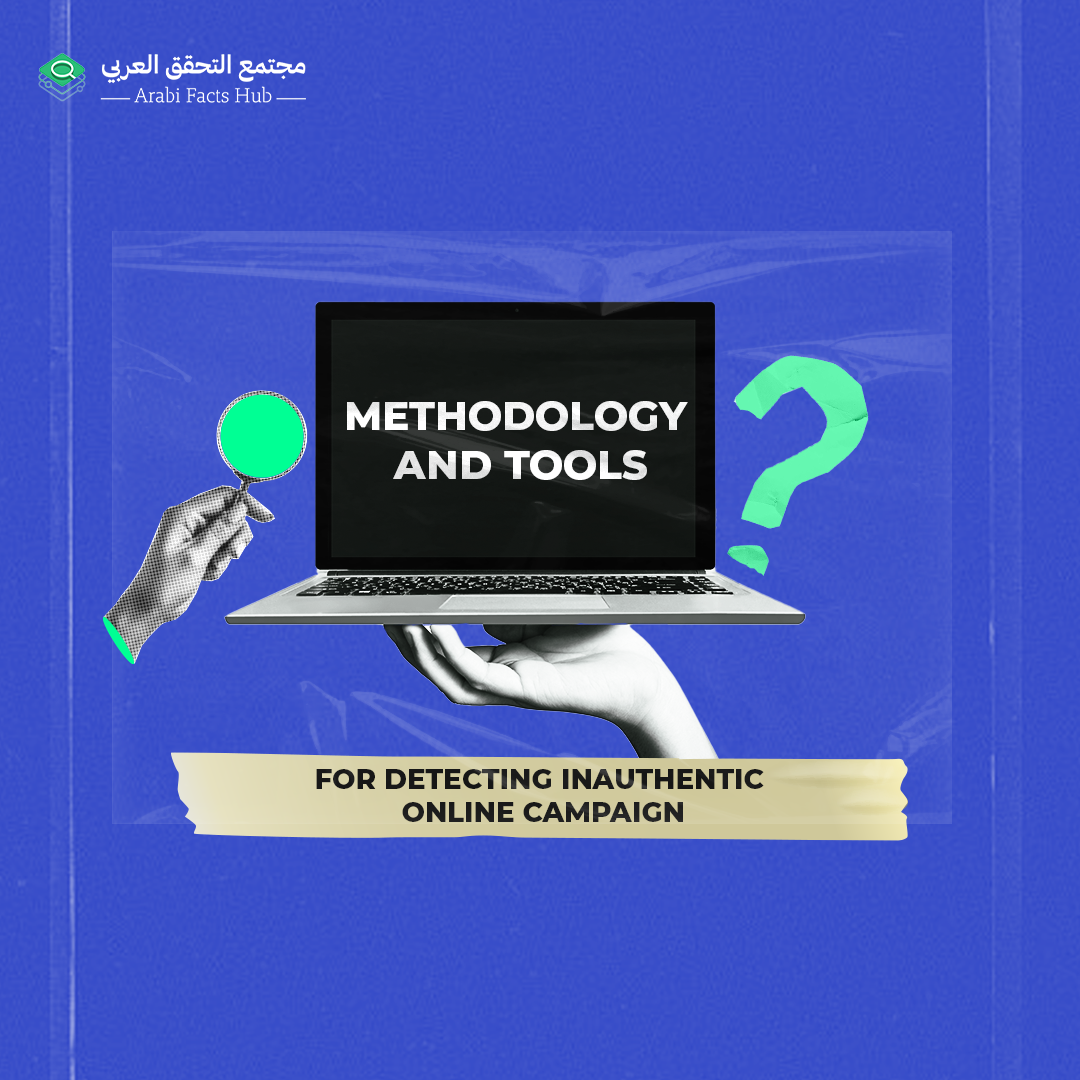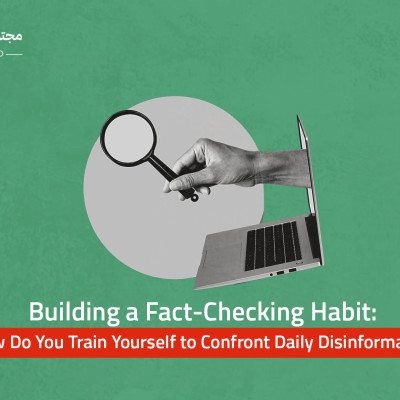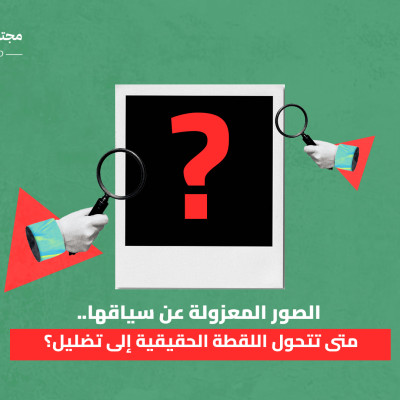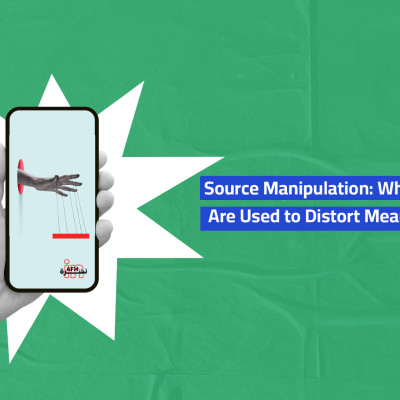Methodology and Tools for Detecting Inauthentic Online Campaign

Despite the relatively recent introduction of 'online campaigns' in Arab countries, this type of propaganda has spread in the Arab world, especially after being utilized in some diplomatic crises. It has become increasingly essential for journalists and fact-checkers to recognize the indicators of inauthentic online activity and the tools to detect it.
What do we mean by fake bots?
Online bots are driven by accounts, most of which are fake, programmed by a certain entity to interact with hashtags and mobilize support for or against a particular party. These accounts are used in the context of political and other conflicts to influence public opinion, create confusion, and give the illusion of a stance different from the prevailing ones or amplify one position over another. This propaganda often involves the spread of misleading information.
Whether through programmed accounts or groups affiliated with an individual, state, or faction, these accounts go by various names such as 'electronic flies,' 'electronic armies,' or 'bots' (short for 'robot'), which are programmed accounts designed to perform specific tasks based on commands from their creator. These and other terms indicate the existence of inauthentic and non-spontaneous activities that are coordinated and organized to manipulate public opinion.
Over time, automated accounts enhanced their capabilities by relying on AI-generated images and employing evasive methods to conceal their automated nature. This includes posting diverse content covering entertainment and religious and cultural topics, rather than limiting themselves to direct political content.
As the techniques for launching these campaigns evolve, the methods for detecting them become more complex. However, journalists can follow certain steps and use specific tools to uncover inauthentic online campaigns and identify those behind them.
Main Traits of Fake Accounts
The first step in uncovering a coordinated online campaign is to monitor hashtags that show a sharp increase in interactions over a short period. At this point, journalists and fact-checkers begin to suspect the nature of this interaction and move on to the next step: examining the accounts active on this hashtag. This suspicion deepens if the participating accounts exhibit the following characteristics:
- Using low-quality profile pictures or images of public figures, religious, or political symbols.
- Using identical, copied content.
- The number of tweets, retweets, and interactions does not match the number of followers the accounts have.
- The accounts were recently created.
- The accounts are active during campaigns and disappear afterward for periods of time.
- These accounts follow each other or a central account that directs them.
- Using words and symbols in the accounts' personal bio that indicate their mission, such as: mobilization, sharing, retweeting, or specific affiliations like: brigades, factions, electronic arm.
- The posting frequency on the accounts does not align with typical human behavior, such as being active most of the day.
Tools for Detecting Fake Accounts
In order to uncover these campaigns and the potential misinformation they may spread, journalists and fact-checkers use a variety of tools, which can be categorized based on their function, as follows:
Tools for Measuring Influence and Reach on Social Media Platforms:
Twitonomy: This tool can be used to display statistics about a specific user's activity, their tweets—especially the most viral ones—and interactions with those accounts, as well as the lists they are subscribed to. It also identifies the most popular hashtags.
Meltwater: This is a paid tool designed for analyzing social media accounts, particularly on X (formerly Twitter). It is used in uncovering misleading campaigns due to its capabilities, which include:
- Searching for hashtags using keywords and analyzing the volume of interaction on them.
- Analyzing the type of interaction, whether it's a post (tweet) or a repost (retweet).
- Analyzing the data of accounts interacting with a specific hashtag. This feature is useful for identifying the countries from which most posts originate. If the country of origin for the majority of posts on a particular hashtag cannot be determined, this is an indication that the account's online activity is not authentic.
[Read more: Arabi Facts Hub Database: How to Access and Make Use of It?]
Tools for Detecting Account Networks:
Fedica Bot checker: This tool helps in uncovering the relationships between accounts and identifying common followers among accounts, aiding in the detection of connections between fake accounts and central bot committees.
AIDR: A support tool for detecting misinformation on social media using both artificial intelligence and human oversight. It allows for searching by keywords or specific hashtags, leading to the accounts that post under these hashtags, and verifying the information being published.
Pipl: This tool is used to uncover a person’s digital identity by searching for their accounts across various social media platforms. It helps determine whether the person is real or fake and monitors their online activities on different platforms.
Webmii: The tool allows users to search for a specific person's name, displaying the accounts and websites where this person has been mentioned. It stands out by showing the level of online activity and interaction, which helps in identifying fake accounts.
Tools for Detecting AI-Generated Texts:
AI Content Detector: This tool utilizes advanced algorithms to identify texts generated by artificial intelligence.
Hugging Face AI Content Detector: This tool verifies written content to determine whether it is authentic and human-generated or produced by artificial intelligence.
Is It AI: This tool analyzes inputted text and gives a percentage indicating the likelihood that the content was generated by artificial intelligence or created by a human. It is a comprehensive tool, as it is also used to detect AI-generated images
Tools for Detecting AI-Generated Images:
AI or Not: This tool detects images or audio generated using artificial intelligence techniques.
JPEGSnoop: The application detects modifications made to images and their editing history. It also extracts image metadata, such as the date of capture, camera type, and lens information.
Hugging Face AI Image Detector: Detects images created by AI applications
The available tools do not provide definitive results regarding AI-generated images; therefore, manual examination is essential to detect potential errors, such as inspecting facial features and image backgrounds.
This article is published in collaboration with Ijnet









